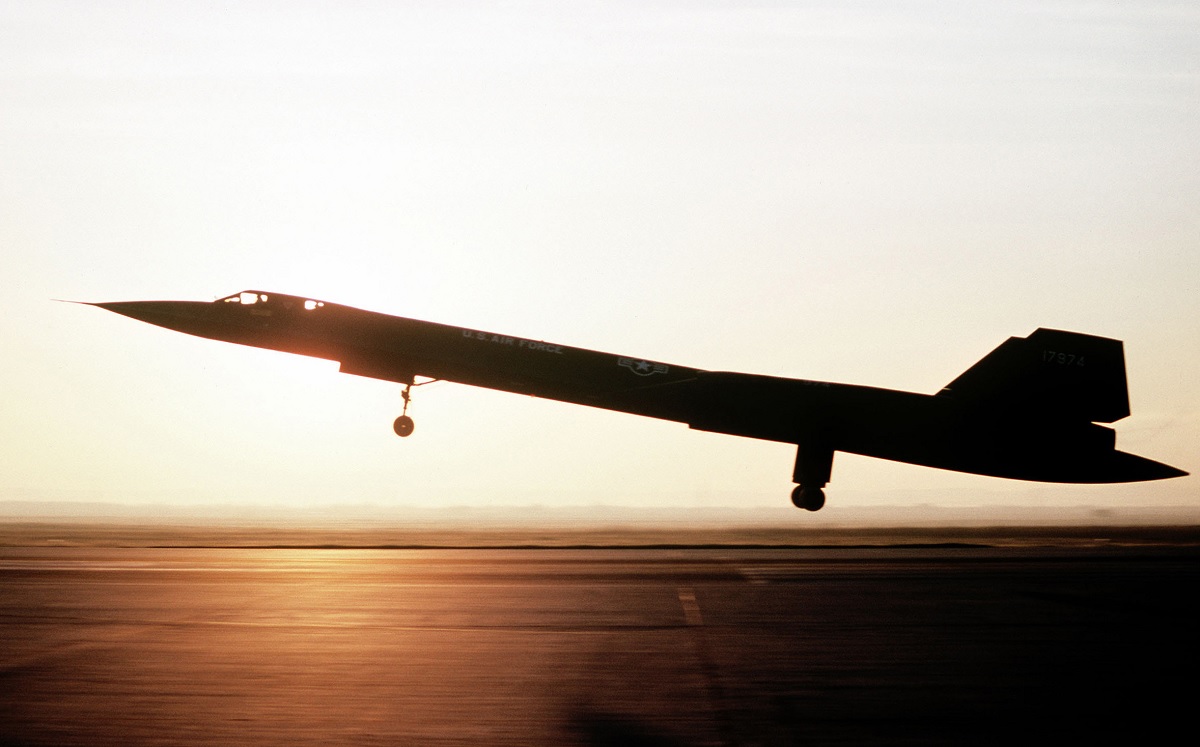“With no forward visibility from the back seat, my RSO was looking through his view sight and had picked up the sequence of flashing lights beneath the aircraft. It was this bond or trust I had with him that made me pull the throttle to idle and sit there until I felt the runway,” Former SR-71 pilot Lt. Col. Bernie Smith
The Lockheed SR-71 Blackbird Mach 3 strategic reconnaissance aircraft maintained its position as the world’s fastest and highest-flying operational aircraft for approximately 24 years. It streaked across hostile skies, gathering intelligence in a couple of seconds because of its extraordinary speed. It could survey 100,000 square miles of the Earth’s surface per hour from an altitude of 80,000 feet.
The most crucial ability that was taught and tested in the simulator was how to handle SR-71 emergencies while still being able to control the aircraft safely – all while traveling at 33 miles per hour. Until the aircraft reached subsonic speed and started to behave like a regular aircraft, crews had to control it while keeping it upright. High levels of crew coordination were needed for both routine and emergency operations, with the pilot and RSO collaborating closely to recognize and address any issues that may have arisen.
The one task that really put each crew’s strengths and weaknesses to the test was crew coordination. As crews were forced to deal with pressing problems that needed to be resolved and corrected as soon as possible, you could see their patience fraying and their personalities changing drastically. In the following account, a former SR-71 pilot Lt. Col. Bernie Smith (Ret) describes the value of crew coordination and other elements that make SR-71 crews function as a team in Col. Richard H. Graham’s book SR-71 Revealed: The Untold Story.

“There is no doubt in my mind that the crew coordination between the pilots and RSOs was one of the strongest contributions to [the SR-71’s] outstanding safety record. In the airline business, this is called CRM, or cockpit resource management—the ability of a crew to function and communicate effectively in the cockpit.
The intense simulator program was the cornerstone of establishing crew coordination. Teaching a pilot to communicate the correct information to his RSO so that he could coordinate the right procedure was difficult but essential. As a simulator instructor taking a new crew through training, I was always amazed watching the crew transform from two separate individuals into one polished team.
This trust and bond between each other allowed two separate individuals, sitting in two separate cockpits, with two different roles, to perform like one individual in order to accomplish one very demanding job. This bond was a strong factor during an SR-71 emergency [Major] Eddie McKim and I had at night on December 22, 1982.
About one and a half hours into the mission while eastbound over Canada, we experienced a left generator failure. We selected Grand Forks AFB in South Dakota as the nearest suitable emergency recovery airfield. During the descent, a primary hydraulic system failed, indicating an accessory drive system (ADS) failure. An ADS failure is one of the most serious emergencies that can occur on the SR-71. Landing soon became imperative!
We dumped fuel to reduce our landing gross weight as we neared Grand Forks. The weather was deteriorating rapidly. It was now two hundred feet overcast, with one-half-mile visibility, and a slippery runway with freezing drizzle. During this emergency I flew the instrument landing system down to minimums; at minimums, where you should execute a missed approach if the runway environment is not in sight, the visibility was so bad I could not see anything.
Because there were no suitable alternate fields available and because we were low on fuel, the idea of a missed approach was not too exciting. I’ll never forget Ed’s words as I sat there at minimum staring into an opaque windshield: ‘I have the strobes insight. You’re on the centerline. Keep on coming.’ With no forward visibility from the back seat, he was looking through his view sight and had picked up the sequence of flashing lights beneath the aircraft. It was this bond or trust I had with him that made me pull the throttle to idle and sit there until I felt the runway.”
Photo by Lockheed Martin and U.S. Air Force

